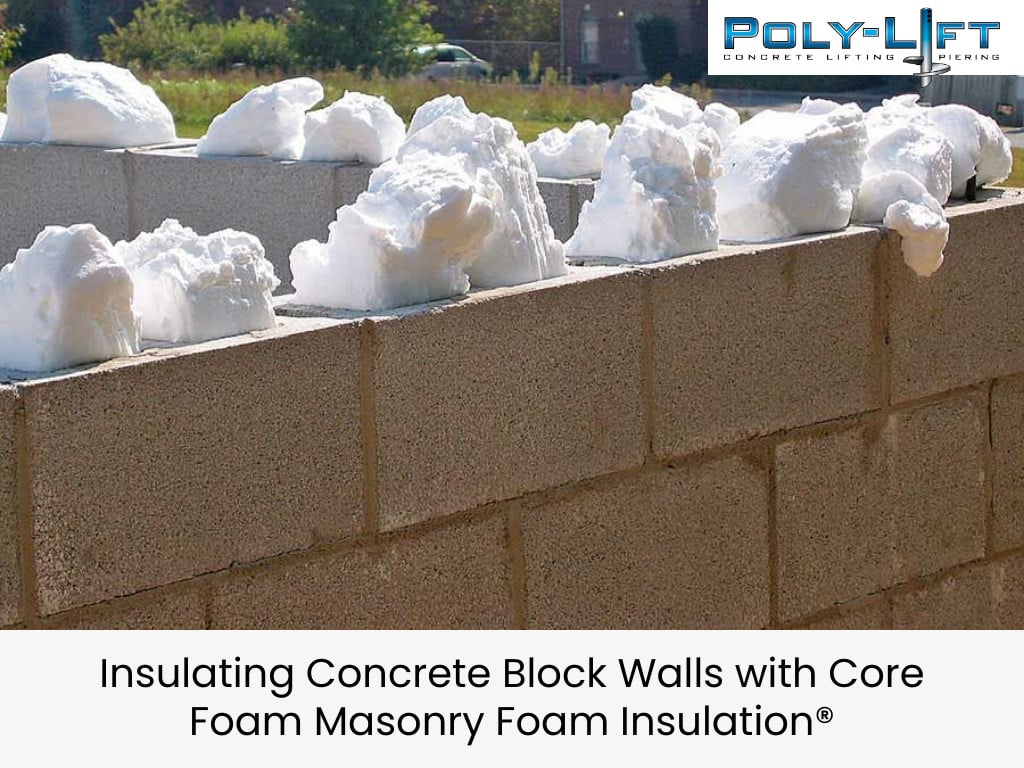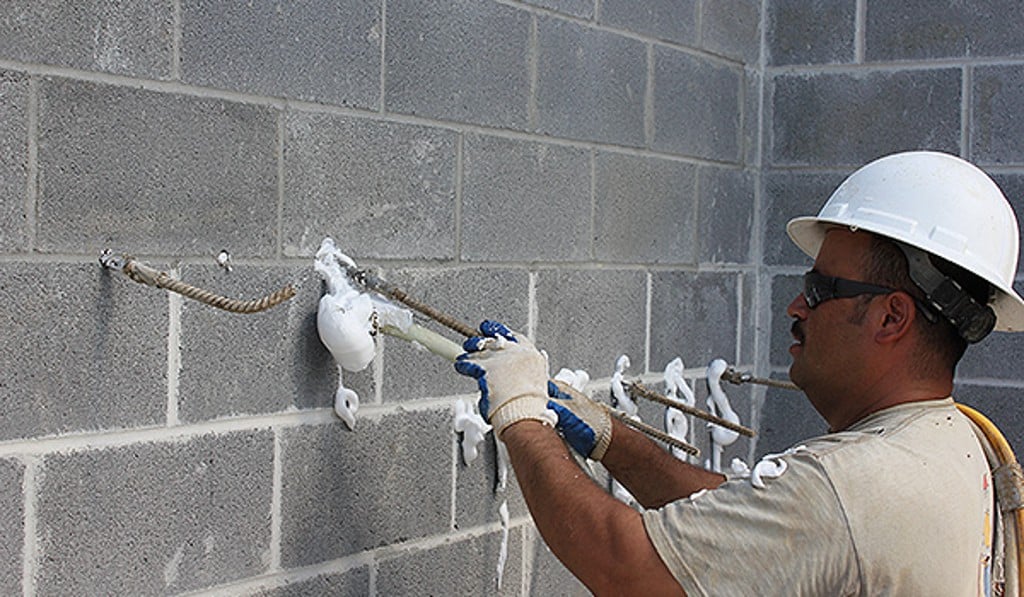Insulating Concrete Block Walls with Core Foam Masonry Foam Insulation®

Concrete block walls are a popular choice for both commercial and residential construction projects due to their strength, durability, and affordability. Not to mention, concrete block walls are fire-resistant and provide excellent soundproofing qualities.
However, these walls are very porous, which means that outside air can easily transfer through them. That’s why the insulation used for concrete block walls is of the utmost importance. Make the wrong choice, and you could be facing higher energy bills and an uncomfortable living or working space.
Fortunately, there’s a solution: Core Foam Masonry Foam Insulation®. This type of insulation is built explicitly for the cores of concrete block walls and is designed to provide superior thermal performance.
In this post, we’ll take a closer look at Core Foam Masonry Foam Insulation® – and why it makes for one of the best options for insulating your concrete block walls.
What is Core Foam Masonry Foam Insulation®?

Before diving into the benefits of Core Foam Masonry Foam Insulation®, let’s first discuss what it is exactly.
As mentioned, core foam masonry foam is specifically designed with concrete block walls in mind. It is a dry resin “foam-in-place” insulation. This means that it starts out as a liquid and is injected into the cores of your block walls, expanding to fill all the voids.
Unlike conventional insulation materials, core foam masonry foam is not held in place by mechanical fasteners. Instead, it cures and adheres to the inside of the wall cavity once injected and expands. This helps ensure that the insulation stays in place and does its job for years to come. Thus, allowing for superior thermal performance.
What Are the Benefits of Core Foam Masonry Foam Insulation?
Now that you know a bit more about Core Foam Masonry Foam Insulation®, let’s look at some of its advantages. With this energy-efficient insulation material, you can expect the following benefits:
Greater Sound Reduction
While concrete block walls are already known for their soundproofing properties, adding foam insulation takes this to the next level.
The closed-cell structure of the foam helps prevent sound waves from entering your living or working space so that you can enjoy a quieter environment. This is especially important in areas where sound pollution is a concern, such as neighborhoods near highways or airports.
Mold and Mildew Prevention
Another great benefit of Core Foam Masonry Foam Insulation® is it prevents condensation from forming inside your wall cavities. This, in turn, helps prevent the growth of mold and mildew.
As you can imagine, this is incredibly important for occupant health – especially in areas with high humidity levels. It also protects the structural integrity of your walls, as the acid that mold produces can deteriorate concrete.
Lower Energy Bills
Poor insulation is one of the top reasons why energy bills skyrocket during the summer and winter months. With Core Foam Masonry Foam Insulation®, you can rest easy knowing that your energy bills will remain in check thanks to the superior thermal performance of this material.
Since this airtight insulation prevents air from entering or escaping the wall cavity, it helps keep living spaces warm in the winter and cool in the summer. This means that your heating and cooling system won’t have to work as hard (or as long) to maintain a comfortable temperature – leading to lower energy bills.
Draft Reduction
In addition to keeping your energy bills low, Core Foam Masonry Foam Insulation® also helps reduce draftiness. Since the cured foam acts like a barrier between the outside air and interior walls, it prevents cold or hot air from entering and interrupting your comfort level.
This is especially important for those living in areas with extreme temperatures and changing weather conditions. By investing in Core Foam Masonry Foam Insulation®, you can ensure that drafts are kept to a minimum and that your space remains comfortable year-round.
How is Core Foam Masonry Foam Installed?
Installing Core Foam Masonry Foam Insulation® is a job best left to professionals. They will have the knowledge and tools needed to properly inject the foam into your wall cavities without issue.
Here’s what to expect when having this insulation installed in your concrete block walls:
1. Siding Removal
The first step in installing Core Foam Masonry Foam Insulation® is to remove a strip of siding from the outside of your home or building. This will give the technician access to the wall cavity, where the insulation will be injected.
2. Drill Holes and Check for Obstructions
Next, a series of small holes will be drilled into each stud cavity. These holes will act as entry points for the foam. The technician will also inspect each cavity for any obstructions or issues that may impede the insulation process.
3. Inject the Spray Foam
Once the technician has inspected each cavity, they will start injecting the foam with a specialized hose. This process is done in small, controlled bursts to give the foam time to expand and fill any gaps.
4. Inspect and Clean Up
After all the cavities have been filled with foam, the technician will inspect them one last time to ensure no issues or areas that need extra attention. The holes will then be patched, and the siding will be replaced.
The Wrap Up
As you can see, Core Foam Masonry Foam Insulation® is one of the best options for insulating your concrete block walls. Not only does it provide superior sound reduction and draft protection, but it also helps keep your energy bills low. Simply put, investing in Core Foam Masonry Foam Insulation® is a smart move for any homeowner or business owner looking to improve energy efficiency and overall comfort.
If you’re considering installing Core Foam Masonry Foam Insulation®, Poly-Lift is here to help. Our professional technicians have decades of experience in the insulation industry, so you can trust us to get the job done right.
Contact us today to learn more about our Core Foam Masonry Foam Insulation® services and get started on your project.
